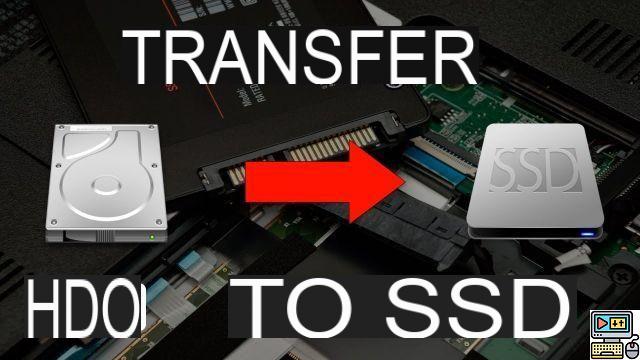 Comment (44)
Comment (44)
Apart from backing up your data, cloning a drive can be used to replace a hard drive with an SSD and thus give an old PC a boost. Here is a step-by-step to operate serenely.
Whether it is to migrate your data from a hard drive to an SSD or just to make a backup, cloning a drive is a very practical and very easy operation.
Let's take a very simple practical case: Windows is installed on a classic hard drive and you are looking to put it on a brand new SSD that you have just purchased. Nothing could be easier with this tutorial. In less than two hours, it is possible to transfer all data and the operating system (OS).
Prepare for cloning
To clone one disk on the other, you must connect both at the same time to your computer (fixed or portable). After that, install the Macrium Reflect software through the official website, this software has three major advantages: It is free for 30 days as a trial version, very easy to use and can clone any OS without worry.
Note that during installation, Macrium requires an email address and a key. If you only plan to use it once, only the email address is required to benefit from the trial version.
Once Macrium has been launched, the interface displays, in its right part, the drives present on the PC. If the freshly plugged SSD (or any other new drive) doesn't appear, consider activating it. On Windows 10, all you have to do is right-click on the Start menu, select "Disk management", then right-click on the grayed-out volume and click on "New Simple Volume *". let wear.
Clone Disk
Once the two disks are recognized, let's move on to cloning. To start, it is necessary to click on "Clone this disk", located between the two disks. A window appears with the original disc at the top and an empty window at the bottom. You have to select the destination disk - which automatically appears if there are only two disks on the PC.
A remark as obvious as it is important: make sure that the destination disk has enough space to accommodate all the data. Otherwise, the cloning will only be partial. If the destination disk is not formatted, it will be necessary to do so - and therefore to erase all the data to prepare it for cloning - and also to erase the partitions present by clicking on "Delete existing partition".
Note that the software will offer to schedule the cloning. It will suffice to leave the window empty if you want to clone immediately. The last step in the process is to name the new drive and click "Finish".
After that, you have to let the PC work, the cloning taking an hour or more depending on the amount of data to be reproduced.
Once the cloning is complete, a window will appear and you are now with two identical disks.
Use the clone
After cloning, the storage capacity of the destination SSD may be limited. For example, if you have cloned a 128 GB drive to a 512 GB SSD, the latter will only offer 128 GB of storage. You just have to go back to disk management (right click on "start" then "disk management"), then click on the SSD and select "extend the volume" in order to enlarge it over the entire disk space.
If you want to change the startup disk by having Windows installed on the cloned SSD and continue to use the old one in addition, you will have to go through the BIOS of the computer (on startup, before starting Windows) and simply select the new boot disk in the "BOOT" option - menus differ depending on the motherboard.


























